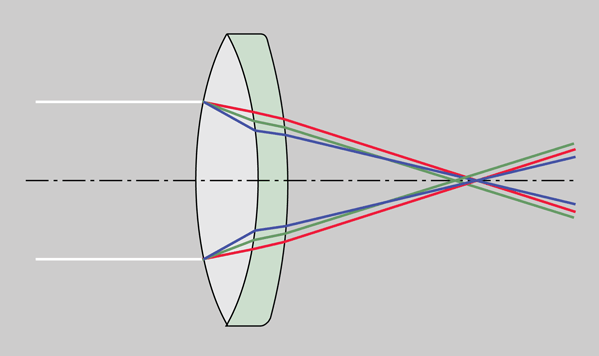An achromat doublet does not completely eliminate chromatic aberration, but can eliminate it for two colors, say red and blue. The idea is to use a lens pair with the strongest lens of low dispersion coupled with a weaker one of high dispersion calculated to match the focal lengths for two chosen wavelengths. Cemented doublets of this type are a mainstay of lens design.
If the powers of the lenses of the doublet give a focus point in front of the doublet as shown above, it is said to be a positive achromat.
Chromatic aberration for three colors can be eliminated with and apochromat triplet.
